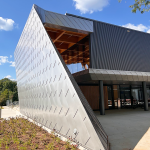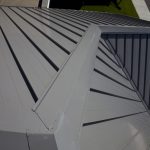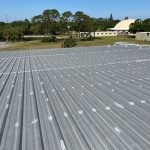Warehouses, distribution facilities, loading docks and other commercial buildings routinely face multiple operating challenges. Managing extensive (and expensive!) inventory levels, responding to fast-turn order requests, maintaining high-volume and high-traffic facilities while making profitable decisions is no simple feat. Ensuring energy and money is not wasted throughout this careful choreography of activity can always use an extra boost of support wherever it’s found. Now making their appearance: high-performance doors.
Increasing productivity and efficiency, one doorway at a time

Whether high-performance (>75 open/close cycles per day) or high-speed (>30 inches per second opening speed), these commercial doors can be a big contributor in generating higher efficiency and much more to a variety of industrial and business settings. In fact, given the breadth of features, benefits and unique applications attributed to these key building envelope components an overview is warranted—and could be very timely as well.
Multiple Benefits
Depending upon the industry, building construction type and specific application, the selection or specification of high-performance doors can yield several operational benefits. In some cases, environmental separation and/or interior temperature control is of great importance. For example, where external weather or wind conditions are extreme, providing a secure seal from the elements while preserving interior comfort and temperature consistency are of greatest importance. In other cases, the need for security is of utmost concern, requiring durable, heavy-duty construction and metal components able to withstand break-in attempts or prevent unauthorized access.
Operational safety is an underlying concern in nearly every commercial application, yet can be addressed in different ways incorporating door component materials, standard access and safety devices as well as monitored door opening and closing speed settings. While efficiency is another aspect which has considerable variety in use case and measurement, ensuring steady facility traffic, generating energy savings and minimizing maintenance are nearly universal on commercial buildings’ must-have lists. What’s more, the durability and reliability provided by repetitive operating cycles and extended product lifetimes yield a return on investment (ROI) that finance executives find especially appealing.
Material Composition
High-performance door types typically fall into one of several material categories. Fabric doors used for both exterior and interior applications feature single- or multiple-ply fabric panels, consisting of polyvinyl chloride (PVC), proprietary multi-filament material, vinyl and industrial-strength screen material. Some other door types—used in food, pharmaceutical and nutraceutical production—use a combination of fabric and composite materials, which are regulated by government agencies and must adhere to strict guidelines for consumer safety considerations.
Rigid metal doors, most often used for exterior-facing or exterior-mounted applications, primarily consist of aluminum, steel and other fabricated metal components. Rubber doors used in extreme environments and applications are generally either styrene-butadiene rubber (SBR) or ethylene propylene diene monomer (EPDM) rubber, although other types such as nitrile rubber (NBR) or chloroprene rubber (neoprene rubber) may also be found.
Industries and Applications
High-speed and high-performance describe not only door functionality but also environments where the doors are used. Loading docks require low maintenance and high dependability to ensure deliveries and shipments can be counted on and major supply chain disruptions are avoided. Warehouse and distribution facilities as well as logistics firms rely on their businesses moving product quickly, efficiently and consistently—where reliability is a necessity. Securing buildings, customers, employees and residents is the focus of parking operations professionals, from busy office buildings and residential high-rises to airport facilities and even cities and municipalities themselves.
Count on Professionals
One more important aspect of high-speed, high-performance doors involves counting on professionals to help properly assess the fit, use and operation of the door, since a mismatched door/application combination may lead to unsatisfactory results and inefficient operation. An experienced professional will not only assess the door’s use, but ensure the context of its building envelope and nearby working environment are taken into consideration. This likely includes any internal/external air pressure and wind load considerations that may come to bear along with requirements of local applicable codes. Further, the opening must be accurately measured along the sides, bottom and top to ensure all necessary clearances are addressed as well as to ensure the correct fit for proper operation.
Michael F. Watkins is vice president of marketing at Rytec Corp., Jackson, Wis. To learn more, call (262) 677-6271, email mwatkins@rytecdoors.com or visit www.rytecdoors.com.







